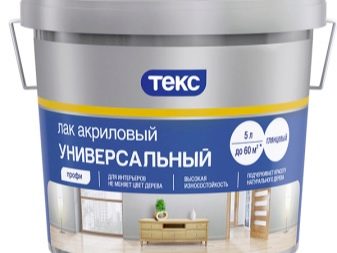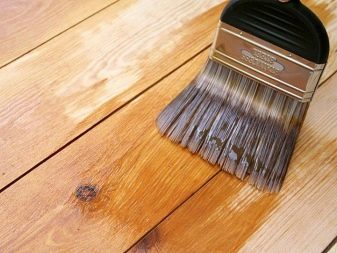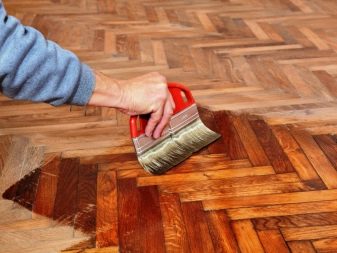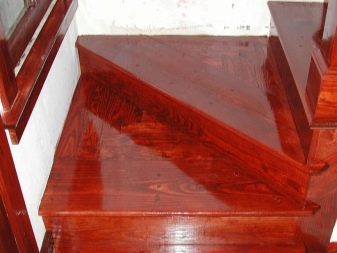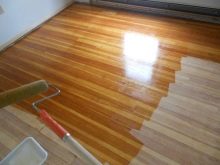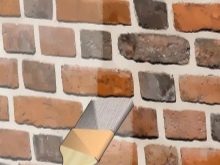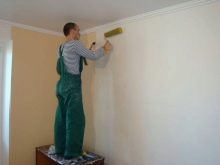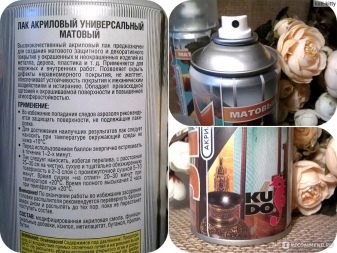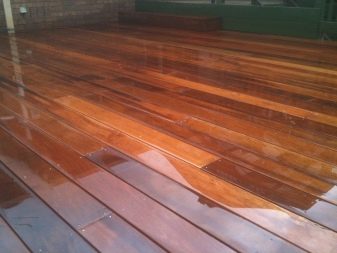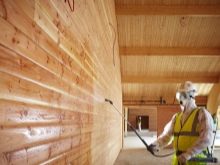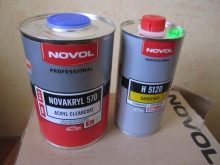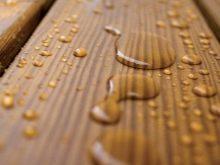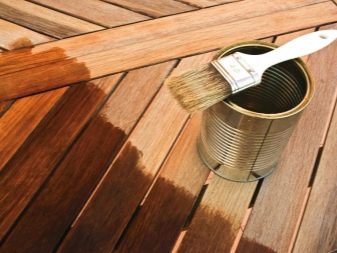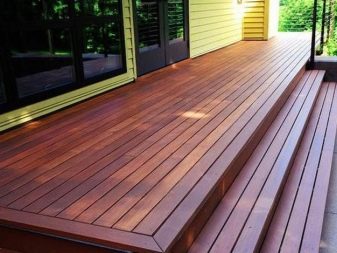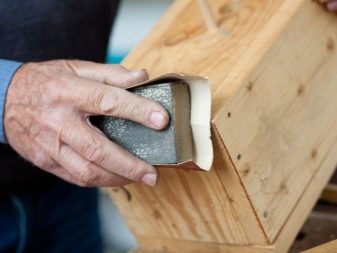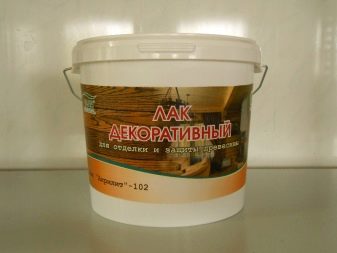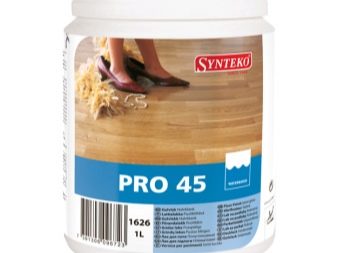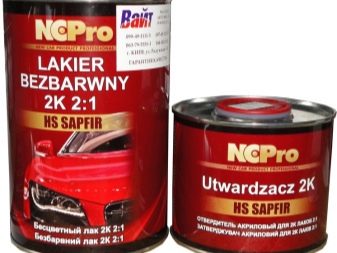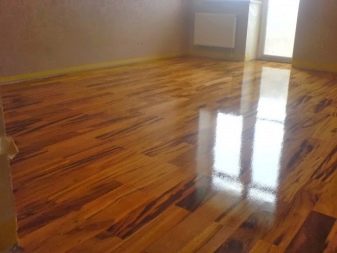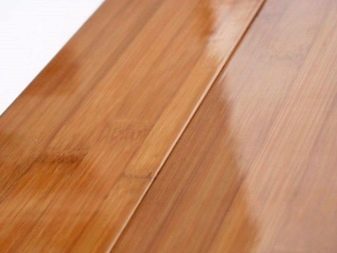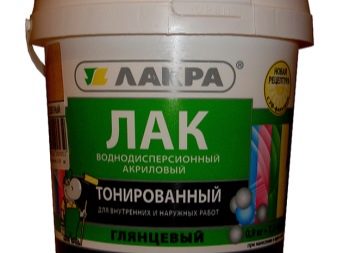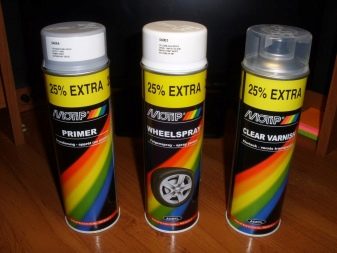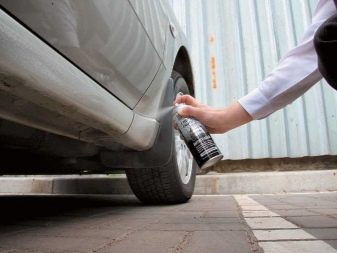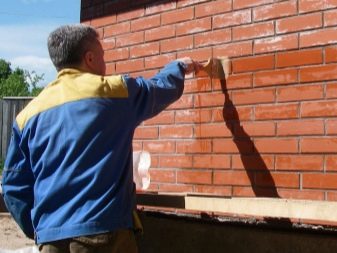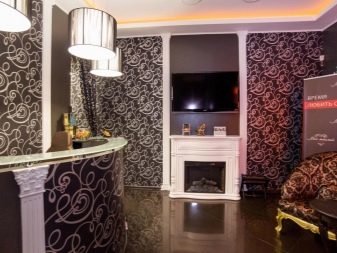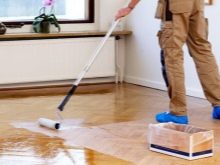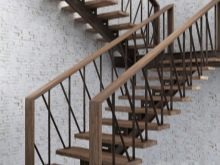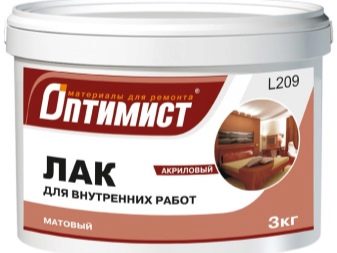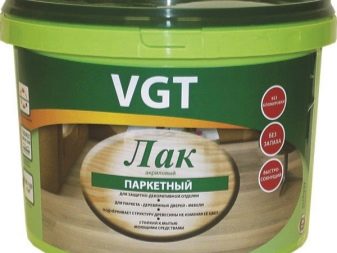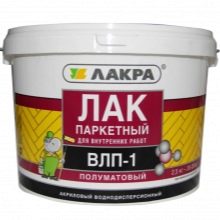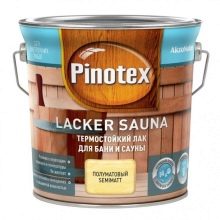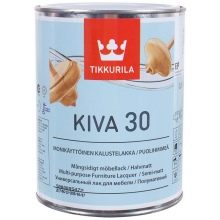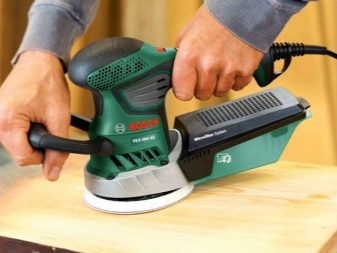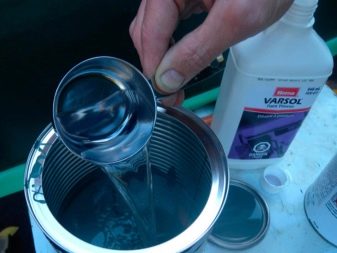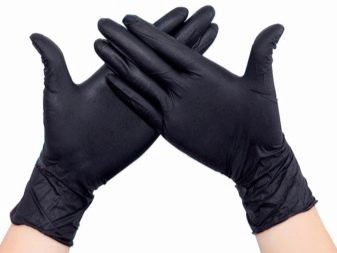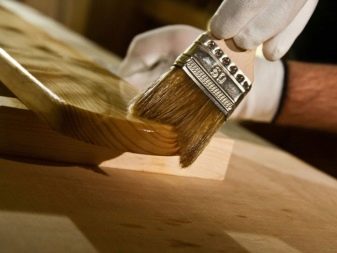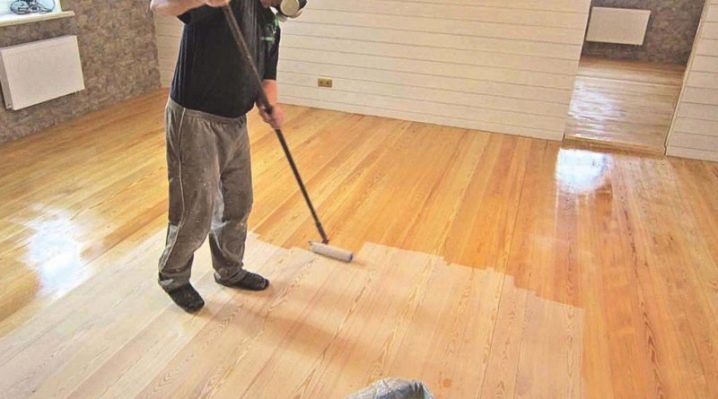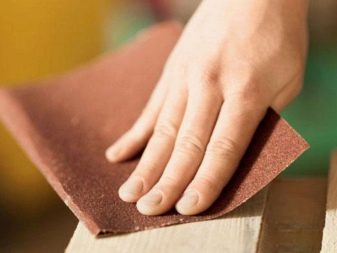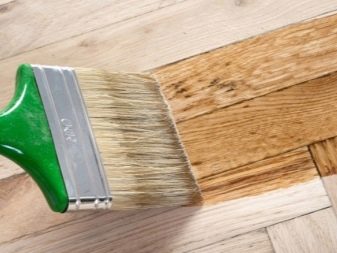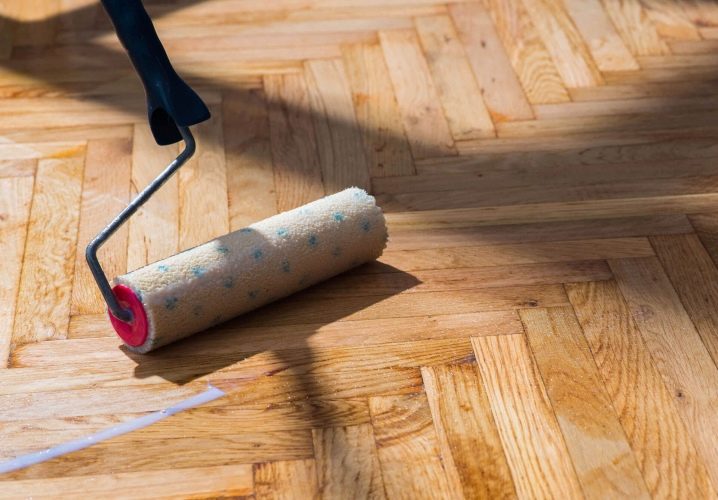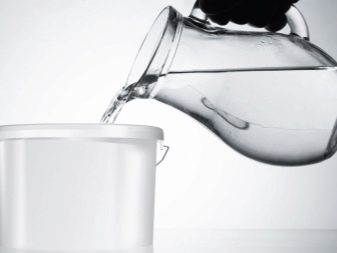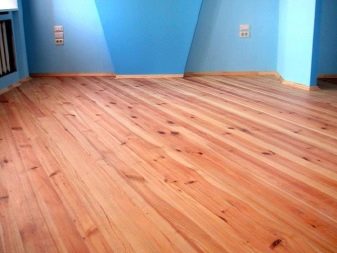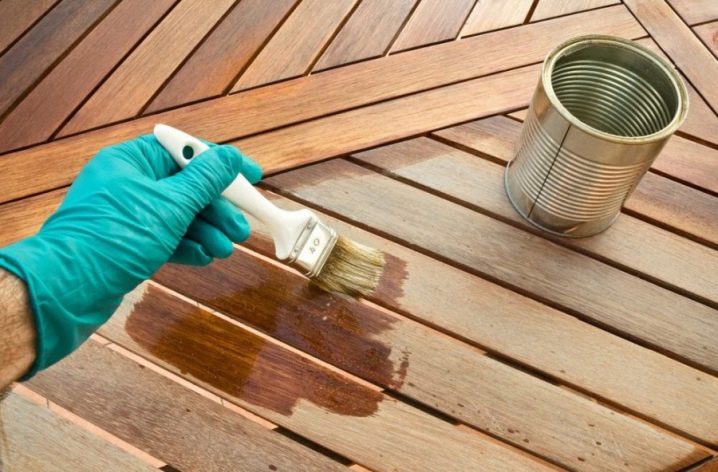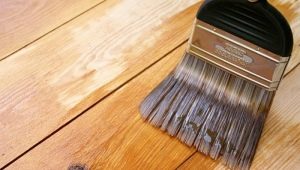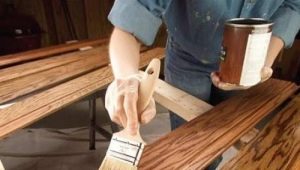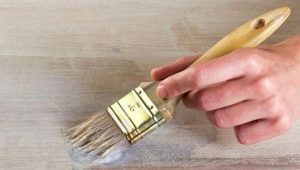Acrylic varnish: types and scope
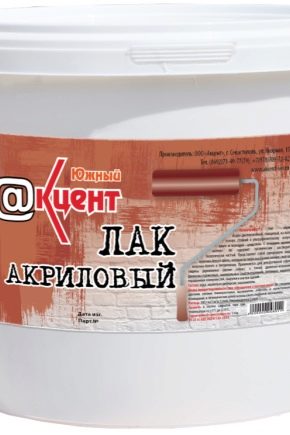
The range of paint products is expanding every day, there are a large number of varnishes. Its production does not use caustic organic solvents, therefore acrylic varnish is an environmentally friendly paint material, which also contributes to the increase in demand for this material.
Special features
Acrylic lacquer is a clear, colorless, water-based material. Due to the presence in the composition of the liquid, which tends to evaporate, the varnish dries quickly. Depending on the surface and the desired result, it can be applied in a thick, pasty or diluted liquid with water.
After drying, the lacquer creates a shiny, smooth film that resists ultraviolet rays, liquids, abrasion and enhances the color and structure of wood.If you follow the rules for applying the acrylic coating, it turns out to be quite durable and elastic, does not crack and will last for many years, protecting the wood and other surfaces from scratches, fading, moisture. When the need arises can be removed varnish after drying, just using a special solvent - remover.
Apply in construction acrylic varnish became relatively recent, but despite this, he managed to gain popularity with consumers. It is well diluted with water, ether, alcohol, does not emit an unpleasant odor, forms a strong adhesion to the surface, does not cause harm to health, and therefore is suitable for interior and exterior decorating.
For varnishing surfaces it is not necessary to resort to the help of qualified specialists. After reading the information provided in this article, you can do everything yourself.
You can varnish different surfaces - cardboard, wallpaper, decorative plaster, plastic, brick and others.
Acrylic varnish consists of the following components:
- acrylic resin;
- plasticizer;
- water;
- special additives - give the material certain qualities, for example, wood varnish contains antiseptics that prevent wood decay.
High physico-chemical characteristics contribute to the effective protection of the surface from aggressive chemical and mechanical effects.
Basic qualities
Acrylic lacquer has both advantages and disadvantages.
First, we list the advantages:
- Environmental friendliness. It contains no organic solvents, no caustic chemical odors.
- Fast drying. This is due to the rapid evaporation of water, and drying will take several hours.
- Plastic. Due to this composition on the floor does not appear cracks.
- Moisture standoff. After hardening, the formed film protects the surface from moisture.
- It has fast adhesion to various surfaces.. This suggests that this paintwork material can be applied to various surfaces without fear that it will peel off. It can be applied to paint or tinted as a protective topcoat.
- UV resistant. This coating can withstand prolonged sun exposure and does not change.
- Long service life Quality acrylic coating is at least 10 years.
- Abrasion resistance. This is especially true for acrylic lacquers designed for high loads.
- Easy application.
- Not weather resistant. The material is not afraid of temperature fluctuations, high humidity. It is thanks to these qualities that it is widely used for outdoor work.
In addition to the advantages, there are some disadvantages:
- Under the influence of a water base wood can rise, as a result the surface turns out rough. To avoid such an adverse effect, lightly moisten the surface in advance and sand. The second option is to immediately apply varnish, then you need to sand the first layer after drying and then apply the varnish again.
- Mandatory compliance with storage conditions. When the temperature is below zero, the liquid in the composition freezes, and the lacquer loses its qualities.
Kinds
Acrylic varnishes are classified according to their composition and appearance.
The composition can be divided into two types:
- Single component. The binding element in them is one substance - acrylic.
- Bicomponent. Connecting substances are two components - acrylic and polyurethane (it is also called urethane). Urethane varnish is more durable.
In terms of texture and appearance, three types can be distinguished:
- Matt - the surface after coating with such varnish has no gloss, is more like a velvet thick film. Clear lacquer, perfectly conceals minor irregularities on the surface to be coated.
- Glossy - the surface covered with it has a pronounced brilliance. Due to the special composition, the gloss is enhanced, while there is a small drawback - all the irregularities and defects become more noticeable. Therefore, it is not recommended to apply on materials with an insufficiently smooth surface.
- Semi-matt - This is the average condition between glossy and matte. Varnish is colorless, contributes to the manifestation of the texture and color of the material. Irregularities appear slightly. If possible, before applying the surface is recommended to grind.
According to the purpose or specificity of the impact, there are several varieties of acrylic varnishes:
- Impregnating antiseptic varnish - used to protect the structure of natural wood from mold and fungal formations.
- Tinted varnish widely used to cover parts of the car, for example, tinted headlights and so on. Such a lacquer composition protects parts from the negative natural and mechanical effects.
- Waterproof Insulation designed specifically for outdoor use or for rooms with a high level of humidity.
- Varnish spray in cans - A variety of aerosol lacquer mixtures, very easy to use. The aerosol is under pressure, so that the composition is convenient to spray. Spray is used to form a protective coating on the car body, to give shine to the surfaces of plastic, metal, wood. This form of release is easy to use.
The advantage over standard liquid varnishes is mobility and speed of application by spraying, while you do not need any additional tools. The spray is spread over the surface in a thin layer, due to which it dries quickly. Aerosol sprays are both colorless and color.
Scope of application
Acrylic varnish is widely used in the production of exterior and interior decorating.
They can cover a variety of interior items made of wood, stone, brick, metal, plastic. This paintwork material is easy to use, dries quickly, protects surfaces from damage.
Depending on the functional purpose of the surface, you need to choose the type of varnish, so you will not only significantly increase the service life of products, but also emphasize the structure of the building material.
For example, it is recommended to apply a matt varnish on a brick wall or wallpaper. It will keep the repair in its original form for many years, and the lack of formaldehyde will make it safe even for use in children’s or in the kitchen.
For the treatment of wooden floors or parquet should choose special varnishes. The material for the solid board forms a stronger and more plastic film that does not crack when temperature fluctuations and humidity levels. The components that make up the varnish for the parquet board create a thin film.
But also varnishes, intended only for interior work, are often not suitable for the production of works outside the room, since they do not so well withstand the effects of the environment.
A wide range and a large range of colors allow you to decorate furniture, interior - a variety of frames, paintings, railings, steps, figurines.
Manufacturers
In the construction markets it is quite difficult to decide on the choice of paintwork material because of the wide range and a large number of manufacturing companies.
There are several popular companies that produce quality products:
- "Optimist" - a major Russian manufacturer of paint and varnish products with a twenty-year history. The company strictly adheres to quality standards, uses high-quality materials in its work.
- VGT - a Russian company specializing in the production of varnishes, paints, enamels, pigments and other acrylic materials. The company has its own research center. In the building stores provided a wide range of products of this company.
- Tikkurila - one of the leading companies in the production of paints and varnishes in Finland, Sweden and Russia. Acrylic varnishes of this brand are in wide demand among consumers.
- Pinotex - products of this company is famous for its quality, is in demand throughout Europe, produces universal, waterproof, wear-resistant acrylic lacquers.
- Lacra produces parquet and tinted varnishes with UV filter, the products have quality certificates.
Products from these manufacturers known positive reviews. Consumers note the absence of chemical odors, ease of use, durability of the coating, high wear resistance.
How to apply?
The most important stage of applying varnish - surface preparation for coating. Acrylic varnish for wood is applied on a sanded, degreased and dry surface, cleaned from dust. Poor polishing, grinding, drying can lead to the need to redo all the work first.
Acrylic lacquer can be diluted only with water, but not more than 10%, so as not to reduce its quality.
To obtain a high-quality acrylic coating, strict adherence to the conditions of application is necessary: the air temperature can vary from + 5 ° C to + 30 ° C. During application and drying, it is recommended to avoid drafts and direct sunlight.
For the application of this paintwork material you do not need expensive tools. It is convenient to apply rollers and brushes. To protect the skin should work gloves.
Before applying the varnish must be thoroughly stirred to a uniform consistency.
If it is necessary to give the tree the desired shade, first apply a water-based impregnation of the desired shade. Then you need to let it dry well, and then apply a clear varnish.
During the work it is important to adhere to all recommendations specified in the instruction, including temperature conditions. It should be noted that when the air temperature is high, it quickly sets. This feature can create some difficulties in varnishing large areas. If you notice some flaws after drying - they can be fixed with sandpaper. But it concerns the matte varnish.
Glossy work is necessary with glossy. Substandard layer can be removed with a remover or under the influence of a building dryer. After washing, the surface must be washed and dried, and then covered again with a new layer.
Experts still recommend applying it on the prepared surface, then leaving it for 24 hours to dry, although many instructions indicate that it is possible to apply the next layer in 30-120 minutes.
The varnish should be applied in several layers with obligatory drying and polishing of the layers, except the final one. Grinding is as follows: the surface is moistened and treated with fine sandpaper. Then, after it dries, wipe off dust and other dirt from it. Now you can apply a finishing coat.
It is especially important to thoroughly sand the glossy varnish after each application (with the exception of the finishing layer). This is due to the fact that the glossy layers form a weak coupling between them. To facilitate the work will help the combination of matte material with gloss.
Surface, on which you are going to apply the parquet paintwork material, pre-primed. So, you can avoid the appearance of irregularities and defects, and the material you will need a smaller amount. For varnishing parquet, use a special two-component acrylic varnish. Due to its composition, it forms a more dense film that is resistant to various kinds of damage and scratches. The finish coat can be tinted and give the desired shade to the wooden floor.
Varnish for floor work involves large loads on the surface, respectively, and it dries longer than other varnishes. It usually dries completely only after a week.. Then it will be possible to install heavy furniture. True, if the temperature during drying will be no more than +10 degrees, then you will need to allocate twice as much time.
Tips
For proper performance of work, use the advice of professionals.
- Immediately before applying the varnish should be shaken and thoroughly mixed to the composition became homogeneous. In no case do not add solvent - only water, but not more than 10%.
- Tools (brushes and rollers) after work, it is easy to wash with warm water and soap.
- During the drying process, make sure that no ultraviolet rays reach the surface. And also the danger is the presence of drafts.
- At the final stage of drying the floor, it is better not to wear hard shoes to avoid scratching.
- In order to avoid bubbles, the varnish layer preceding the finish layer must be sanded. Layers are recommended to be applied on average with an interval of 12 hours. With a low air temperature and high humidity levels, it is necessary to allocate twice as much time for drying.
- Be sure to use gloves during application.
- During the restoration of already varnished surfaces, sometimes there is a problem with the elimination of irregularities. To level the surface, first apply 2-3 layers of colorless varnish, and then the already tinted composition.
- If at the end of the work you notice irregularities and wish to eliminate them, you can wash off the varnish layers with a special wash.
Having an idea of the composition, properties and rules of applying acrylic lacquer, you can use this information in practice in the manufacture of repairs with your own hands, without making mistakes.
How to apply acrylic lacquer without streaks and streaks, see the following video.
